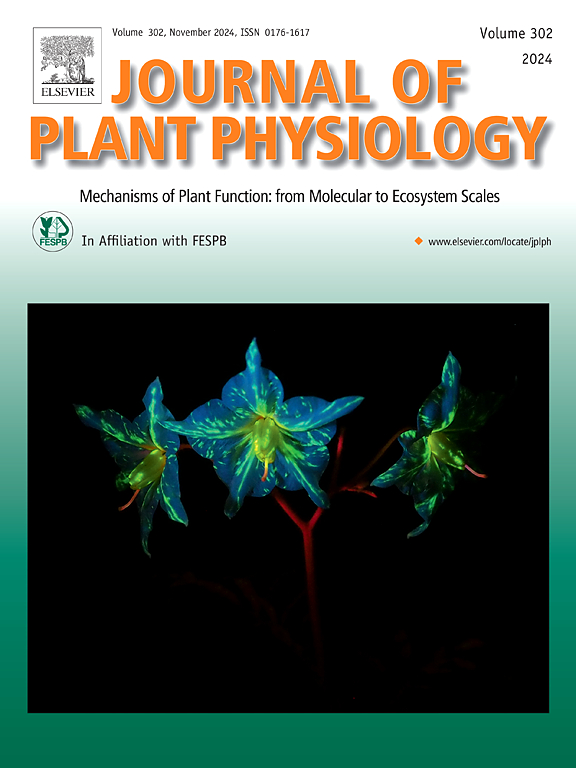四唇的不同功能:气孔发育及其他
IF 4.1
3区 生物学
Q1 PLANT SCIENCES
引用次数: 0
摘要
气孔由成对的保护细胞组成,是植物大气气体交换必不可少的气孔,其发育受到严格的调控。FOUR LIPS (FLP)是第一个有特征的气孔发育调节因子,研究了三十年。它编码一种非典型的R2R3-MYB转录因子,通过抑制几个核心细胞周期基因来限制保护性母细胞分裂。在气孔命运承诺和分化过程中,该因子与bHLH蛋白FAMA和MUTE表现出部分功能冗余。其气孔调节功能在植物物种中是保守的。值得注意的是,FLP在组织中的广泛表达可以实现气孔以外的功能,包括根向地性、侧根起始、雌性配子体发育和叶片角度决定。此外,FLP受干旱、盐和冷胁迫等环境因素的诱导,介导适应性反应。在此,我们总结了目前对FLP的理解,重点关注保守的气孔机制,并强调其在植物系统中的功能多功能性。本文章由计算机程序翻译,如有差异,请以英文原文为准。
Diverse functions of FOUR LIPS: Stomatal development and beyond
Stomata, composed of paired guard cells, serve as essential pores for plant–atmosphere gas exchange and undergo tightly regulated development. FOUR LIPS (FLP), the first characterized regulator of stomatal development, has been studied for three decades. It encodes an atypical R2R3-MYB transcription factor that restricts guard mother cell division by repressing several core cell cycle genes. This factor exhibits partial functional redundancy with bHLH proteins FAMA and MUTE during stomatal fate commitment and differentiation. Its stomatal regulatory function is conserved across plant species. Notably, broad FLP expression across tissues enables functions beyond stomata, including roles in root gravitropism, lateral root initiation, female gametophyte development, and leaf angle determination. Furthermore, FLP is induced by environmental cues such as drought, salt, and cold stress to mediate adaptive responses. Here, we summarize the current understanding of FLP, focusing on conserved stomatal mechanisms and highlighting its functional versatility across plant systems.
求助全文
通过发布文献求助,成功后即可免费获取论文全文。
去求助
来源期刊

Journal of plant physiology
生物-植物科学
CiteScore
7.20
自引率
4.70%
发文量
196
审稿时长
32 days
期刊介绍:
The Journal of Plant Physiology is a broad-spectrum journal that welcomes high-quality submissions in all major areas of plant physiology, including plant biochemistry, functional biotechnology, computational and synthetic plant biology, growth and development, photosynthesis and respiration, transport and translocation, plant-microbe interactions, biotic and abiotic stress. Studies are welcome at all levels of integration ranging from molecules and cells to organisms and their environments and are expected to use state-of-the-art methodologies. Pure gene expression studies are not within the focus of our journal. To be considered for publication, papers must significantly contribute to the mechanistic understanding of physiological processes, and not be merely descriptive, or confirmatory of previous results. We encourage the submission of papers that explore the physiology of non-model as well as accepted model species and those that bridge basic and applied research. For instance, studies on agricultural plants that show new physiological mechanisms to improve agricultural efficiency are welcome. Studies performed under uncontrolled situations (e.g. field conditions) not providing mechanistic insight will not be considered for publication.
The Journal of Plant Physiology publishes several types of articles: Original Research Articles, Reviews, Perspectives Articles, and Short Communications. Reviews and Perspectives will be solicited by the Editors; unsolicited reviews are also welcome but only from authors with a strong track record in the field of the review. Original research papers comprise the majority of published contributions.
 求助内容:
求助内容: 应助结果提醒方式:
应助结果提醒方式:


